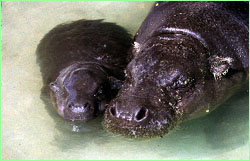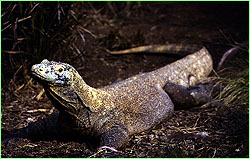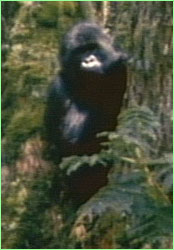 |
 |
 |
Part 2 | back to part 1 Local people's tales of fantastic creatures should not be dismissed out of hand. For centuries, Europeans traveling in remote areas were wont to disregard any legend an indigenous person might have of beasts that they themselves had not seen. This was part paternalism, part justifiable caution in the face of the possibly apocryphal. Yet indigenous people often know whereof they speak. In 1840, for example, outsiders first heard of a dwarf version of the hippopotamus that native Liberians claimed they hunted in the jungle. But since no Europeans had seen a live one, it was not until the early part of this century that biologists finally conceded that the West African pygmy hippo actually exists. In Africa alone, there are myriad instances of animals that foreigners thought fabulous even as locals calmly informed them they were quite real. "Most of these animals were known first from native reports about them," writes the late naturalist Gerald Durrell, adding facetiously "and, of course, primitive tribesmen all over the world spend their time making up stories about animals in order to confuse and delude European zoologists."
One of the most famous of once-fabulous creatures was first described in 1625. That year, an English adventurer named Andrew Battel published a story about a monster in the heart of Africa known as the pongo.
This Pongo is in all proportion like a man, but . . . he is more like a Giant in stature, than a man: for he is very tall, [and] hath a man's face, hollow-eyed, with long haire vpon his browes. His face and eares are without haire, and his hands also. His bodie is full of haire, but not very thicke, and it is a dunnish colour. . . Hee goeth alwaies vpon his legs, and carrieth his hands clasped on the nape of his necke, when he goeth upon the ground . . . They goe many together, and kill many Negroes that trauaile in the Woods . . . Those Pongos are neuer taken aliue, because they are so strong, that ten men cannot hold one of them . . . .Despite such a detailed portrait by a white man, few Europeans believed such a beast existed. A full century and a half after Battel's story appeared, one writer claimed that "the large species, described by Buffon and other authors as of the size of a man, is held by many to be a Chimera." It was not until the mid-19th century that biologists finally described the animal, giving it the scientific name Gorilla gorilla. Continue Fantastic Creatures | Birth of a Legend Eyewitness Accounts | Experimenting with Sonar Resources | Transcript | Site Map | Loch Ness Home Editor's Picks | Previous Sites | Join Us/E-mail | TV/Web Schedule About NOVA | Teachers | Site Map | Shop | Jobs | Search | To print PBS Online | NOVA Online | WGBH © | Updated November 2000 |
 The forest-dwelling pygmy
hippopotamus is alive and well in West Africa.
The forest-dwelling pygmy
hippopotamus is alive and well in West Africa.
 Named for the
Indonesian island that is its chief remaining habitat, the Komodo dragon is the
world's largest lizard.
Named for the
Indonesian island that is its chief remaining habitat, the Komodo dragon is the
world's largest lizard.
 It wasn't until
two and half centuries after a European first described the gorilla that this
hefty primate was finally described scientifically.
It wasn't until
two and half centuries after a European first described the gorilla that this
hefty primate was finally described scientifically.